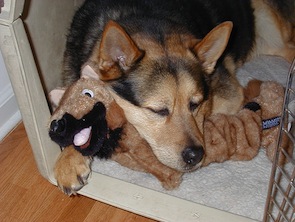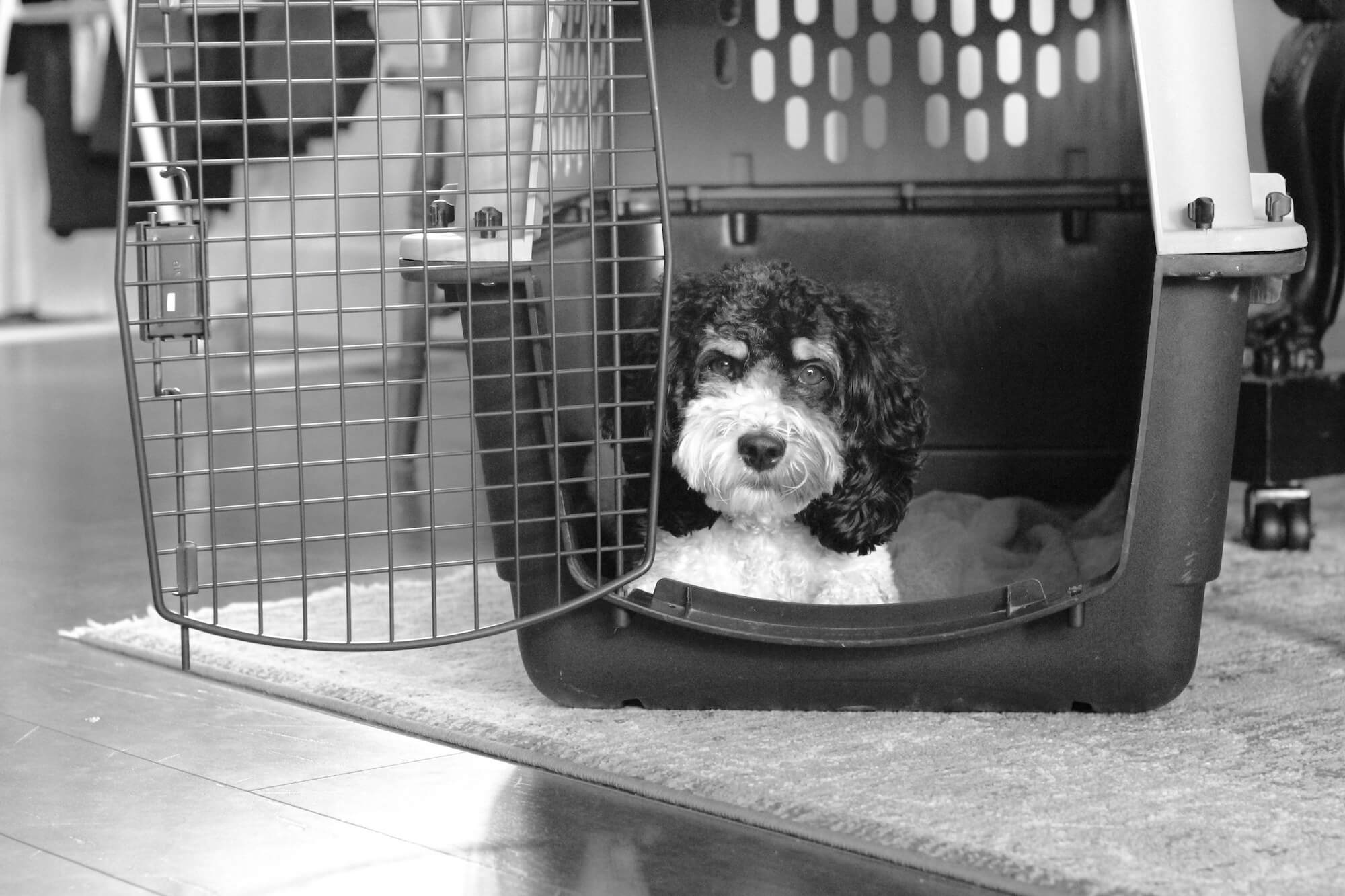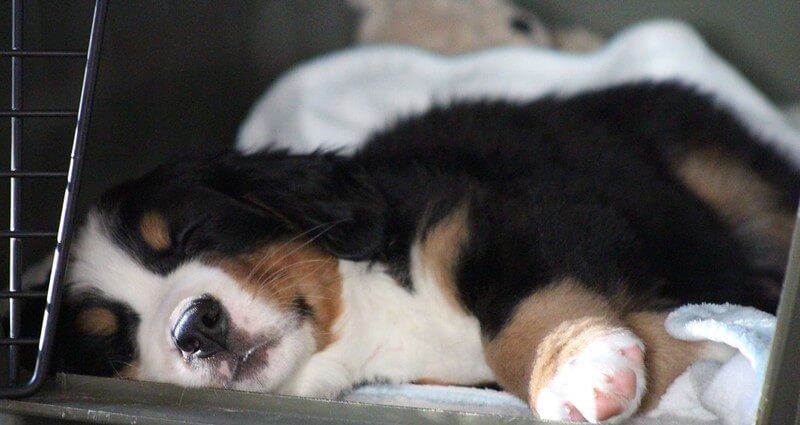Successfully Crate Training a Dog
This post may contain affiliate links. I may earn money from the companies mentioned in this post.
Many people don't understand the importance of crate training a dog, and can't understand why I would want to keep a pet in such a confined space.
The term "inhumane" gets flipped around quite a bit when discussing crates. The problem is that they don't know what they're talking about! In fact, they couldn't be more wrong...
When properly crate-trained, a dog will see its crate as a "den" - a safe, cozy place to sleep and get away from excess noise and busyness. That's the most important part - properly crate training a dog that it is safe, not scary or lonely.
What many owners do wrong is forcing their dog to go into a crate right away for extended periods of time, or banishing the dog for "time-out" to his crate. The first thing that you have to realize and understand is that our dogs aren't children, and they don't understand time-out!
Dogs live for the moment, so by the time you drag him over and get him into the crate for his time-out, he has no idea what this is all about! So yes, using a crate for this purpose is mean and inhumane.
But properly crate training a dog or puppy will help calm him. These dogs enjoy being in there, and even seek it out on their own to rest and relax in.
The key is to gradually get your dog used to going in and
staying in.
Start
out slowly - when I crate trained Milo, I merely tossed a treat into
the crate and let him go in, get the treat and come back out.
Then I got him to go in for a treat, and closed the door of the crate for 5 seconds, verbally praising him, then let him out again. Working in tiny increments, you can acclimatize your dog to like his crate!
Prevent Problems by Crate Training a Dog
So how can crate training a dog prevent many behavioral problems? Let's look at a few of them:
- Your dog is not house trained yet, or still has occasional accidents in the house (or maybe quite often!). By crating your dog/puppy while you are gone away, you can prevent these accidents from happening and make house training a breeze.
Why? A dog won't urinate or defecate in a crate that is the proper size, as they don't like to lay in it. Keep reading to find out how to size a crate.
- The same goes for at night - crate training a dog or puppy will prevent night-time accidents, too!
Your puppy likes to chew shoes, furniture, clothing and basically anything it can get its sharp little teeth on. While you are away, crating him will prevent this habit from taking a firm hold on your puppy.
- Jumping up on furniture while you are away - that's right, you already know the answer. Crate the dog - he can't get to the new couch then, can he?
- Stealing food from the counter top - dogs can be sneaky... I know of someone who's dog even breaks into the freezer if not crated and steals food to munch on!
- Separation anxiety - if your dog gets very worried and anxious when you leave him, properly crate training will help him to feel more secure when you leave. What do I mean?
 Photo courtesy of Edward Liu via Flikr
Photo courtesy of Edward Liu via FlikrA crate can be a safe, comforting spot for your pet. When this is the case, leaving him in the crate when you leave will prevent him from destructive habits, as well as make him feel safe in his "den".
You can even leave an object that smells like you in it, if you'd like.
You may be wondering what the proper size is for your dog's crate. My simple rule of thumb - only buy a crate that is big enough to let your dog stand up, turn around, and lie down.
If the crate is any larger, your pooch will be able to pee or poop in one corner, and sleep in the opposite corner (and they will... trust me, I've seen it all!).
Type of Crate to Buy
The two main types of crates available are wire crates and plastic crates. I use a plastic Petmate Ultra Vari Kennel, with the squeeze-lock on the door instead of the dial-lock. Some dogs learn how to get the dial to spin and then let themselves out of the crate!
A plastic crate is more closed in (den-like) and cozy for a dog. It's also stronger than a wire crate, which is important for transporting your dog, whether in a car or an airplane. Wire crates are hinged in several places, so that it can be folded down for easy storage or transport, but that makes it less safe for travel.
Many owners buy the wire crates because they are cheaper, and often come with a built in divider that can be moved as your puppy grows, which is a good thing, I suppose. So if you already have a wire crate for use in your home, no worries. You can always throw a blanket over top of the crate to close it in more.
 Our puppy Milo in his plastic crate.
Our puppy Milo in his plastic crate.Which brings me to another point. When traveling, it is always safest for you (as well as for the dog!) to crate him or use a dog seat belt. Many accidents are caused by pets being loose in a vehicle, and in case of an accident, your dog is safer in a crate or in a seat belt, and your own safety may depend on it as well.
One last reason for crate training a dog is in the case of an overnight veterinary visit. Going to the vet is scary enough for most dogs, and being forced into a crate can make it that much more difficult if he's never had to before. Having your dog comfortable with a crate will go a long way to making this type of vet visit go a lot smoother.
Now that you know all these great reasons to crate train your dog, you can see why many people choose to do so. A multitude of problems can be prevented by simply choosing to properly crate train your dog. Take it from me, it's the best way!
- Home
- Dog & Puppy Care
- Crate Training


